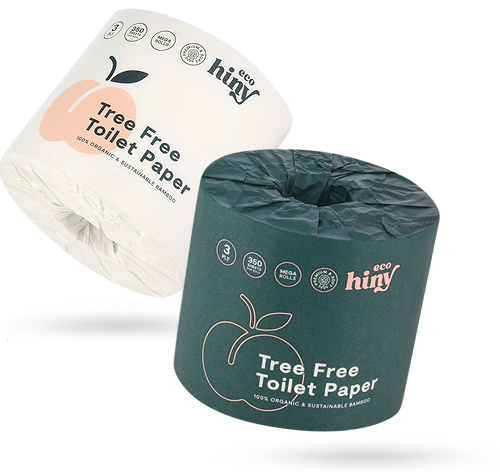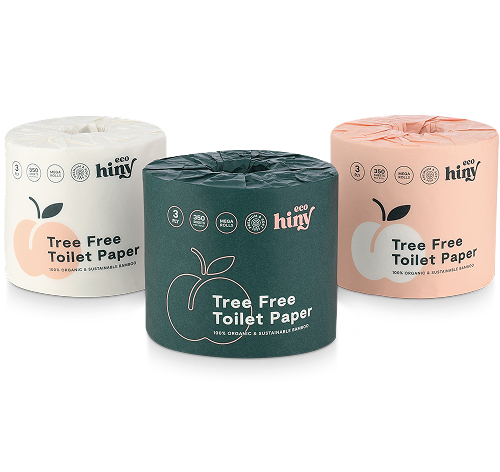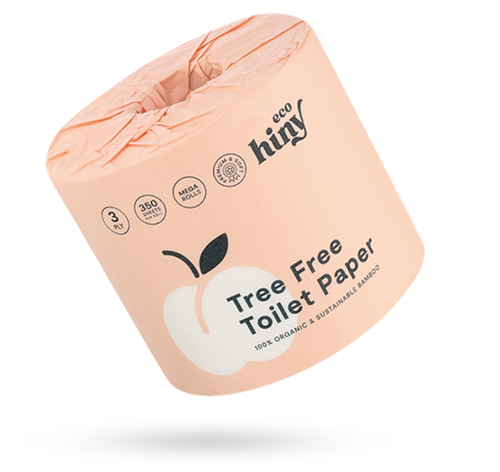Key Points
- Traditional toilet paper production raises many environmental concerns.
- Bamboo toilet paper is a more environmentally-friendly option for many reasons.
- Making the change to bamboo toilet paper is a simple switch with significant environmental impact.
If you've got a shopping list, chances are toilet paper is on it. It's a household essential that, um, you don't want to be stuck without. You've likely got it at the ready, and it's probably stocked in your cabinets.
We all use it, and we use it a lot. (1)
Facts about regular toilet paper usage:
- Americans consume the most toilet paper per day of any country
- People use an average of 8-9 sheets of toilet paper per bathroom visit
- Toilet paper is often used for other tasks like covering toilet seats, removing make-up, and blowing noses
- The daily production of toilet paper is about 83,048,116 rolls per day
Obviously, we need T.P.! It's a no-brainer necessity, but it might be time we give it more thought. Consider the countless rolls of toilet paper you've purchased; are they really the right rolls for you? Are they really right for the environment?
For a long time, we didn't have much choice as to what we could pick for wiping. Everything available came from using the same finite resources and similar production practices. (2) Thankfully that's changing.
With increasing awareness of our impact on the planet and a growing population of eco-conscious consumers, we've got an option that will make your hiny happy and help you protect our planet!
Bamboo toilet paper is the choice for addressing environmental concerns, putting a dent in deforestation, and eliminating the use of toxic chemicals that accompany most traditional toilet paper. Let ecoHiny put you on to just how much better bamboo is for the environment.
Traditional Toilet Paper Production Means Irresponsibility With Our Raw Materials
Let's start by examining how traditional toilet paper is manufactured. It's here you'll discover several practices that end up as negatives to our environment.
The production of regular toilet paper requires the use of wood pulp from trees. (We'll get into the specifics of how many trees and exactly what that means to our atmosphere in a minute.) Hardwood trees are harvested and shredded into wood chips that will eventually become the basis for the paper.
Chemicals are part of your traditional toilet paper too. The wood pieces are cooked in chemicals that create pulp. That pulp is then washed and sent to a bleaching plant, where it undergoes several chemical processes that bleach the paper white. It's then sprayed onto mesh screens, matted, dried, and rolled onto large cylinders for cutting into rolls.
It is estimated that this entire process requires 37 gallons of water for just one roll of toilet paper and 1.3 kilowatt/hours of electricity! (1)
The final step is wrapping the rolls into their packaging. Most toilet paper brands wrap their rolls in plastic packaging for sale in stores. After use, traditional toilet paper can take years to fully decompose. (3)
Making traditional toilet paper is certainly a drain on our resources and is loaded with toxic cooking chemicals and bleaching agents. What is perhaps most astonishing, though, is the impact it has on our forests.

Kind to you, Kind to the planet
Our mission is to save one billion trees by making the switch to ecoHiny.
The Toll on Our Trees
Regular toilet paper is made from virgin paper, which means it's made with 100% wood pulp from trees, about 27,000 per day globally, to be exact. (1) This is a staggering and sad statistic for those of us who understand the importance of preserving our precious forests.
When we remove trees from the earth, we rob their ability to absorb carbon dioxide. During photosynthesis, trees absorb this harmful greenhouse gas. Fewer and fewer trees mean accelerated climate change.
Deforestation also means a disruption to plant and animal habitats. The biodiversity of our forests is dependent on the presence of trees. (4) When they're removed, many species no longer have the protection and sustenance needed to survive. Deforestation can put plants and animals at risk of endangerment and even extinction.
Harmful deforestation, toxic chemicals, water waste, and years to break down; how does bamboo make toilet paper better?

3-ply 250 Sheetsand 2x absorption
The Process for Making Bamboo Toilet Paper
All that chemical processing and bleaching that regular toilet paper goes through doesn't happen during the manufacturing of bamboo toilet paper. Bamboo culms, or the main stalk, are broken down into small fibers, but no chemicals are added during their soaking process.
Bamboo toilet paper only contains 100% bamboo fibers and nothing else. It's really possible to have a toilet paper product that's free of any additives!
Beyond the perks of its production, let's look at the most significant factor that makes bamboo toilet paper the most environmentally friendly option out there.
The Superpower of Sustainability: Bamboo Has Got it
When you buy toilet paper made from 100% bamboo, you're buying one ingredient, bamboo, and this plant has a special superpower: sustainability.
First, let's get one thing straight; bamboo is not a tree. Could we say we're tree-free if it was? Its height often causes people to mistakenly consider it a tree, but it actually is just really tall grass. Bamboo's true identity is what makes it a much more sustainable crop.
Just like the grass on your lawn, bamboo can be cut, and unlike hardwood trees, it simply grows back. Bamboo replenishes itself from its existing root system, so there's no disruption to soil or replanting required. And, what's even more impressive, is the rate that it regenerates! Many species of bamboo can grow feet in just one day.
Bamboo also releases more oxygen into the atmosphere. Bamboo crops produce over thirty percent more oxygen than a tree cluster of similar size. (5)
Choosing ecoHiny Means Making a Difference
ecoHiny is proud to bring you the message and the means to make positive change for our planet! By purchasing our eco-friendly toilet paper, you're making a commitment to help us ensure a better outlook for our forests and setting us up for a more sustainable future.
You may have never considered such an easy household switch to result in such a profound impact, but every purchase of ecoHiny means more trees stay in our forests.
Help us become part of the solution. Make the move to bamboo toilet paper today!
Source:
- "Toilet paper is a giant waste of resources." Big Think, 29 Mar. 2020, bigthink.com/health/toilet-paper-is-a-giant-waste-of-resources/.
- "Toilet Paper." Made How, www.madehow.com/Volume-6/Toilet-Paper.html#google_vignette.
- "The Dirty History: Is Toilet Paper Biodegradable." ecofreek, ecofreek.com/biodegradable/is-toilet-paper-biodegradable/.
- "Biodiversity." National Geographic, education.nationalgeographic.org/resource/biodiversity/.
- "Why Bamboo? (Green Solution)." Lewis Bamboo, lewisbamboo.com/pages/why-bamboo-green-solution#.

Premium Bamboo Toilet Paper
EcoHiny's 3-ply bamboo toilet paper.
From $39.99

Kind to you, Kind to the planet
Our mission is to save one billion trees by making the switch to ecoHiny.





